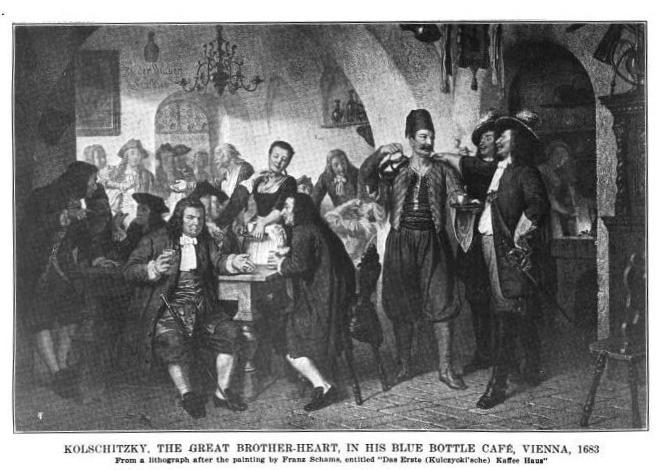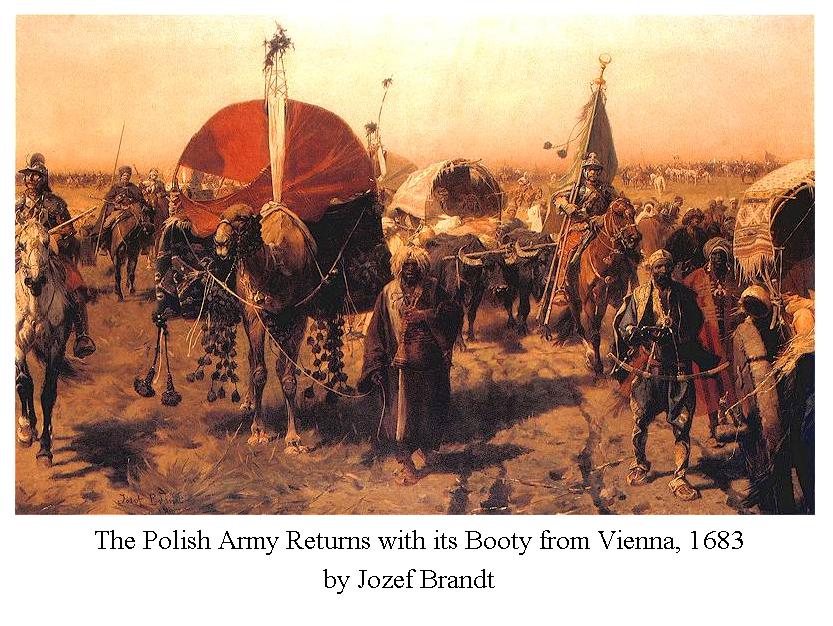January 2012 - The Blue Bottle
 |
|
The Blue Bottle Cafe, or How a Spy opened Vienna’s First Coffeehouse
Vienna has its own roast and fame for its coffeehouses due to a very close call with the Ottoman Empire. The Turks certainly would have brought a coffee culture along with changing the course of history if the siege of Vienna had turned out differently.

Here was a critical moment in history. Europe was under threat from the East, with a huge army at its doorstep, besieging the Holy Roman Empire’s capital. This threat was not new, and had been beat back before, but should Vienna fall, the Ottomans would be able to penetrate deep into Europe, up the Danube.
The siege was long, and though the city was well-fortified, it was completely cut off from the rest of the world. Food became scarce and fatigue was setting in. The Ottomans were successfully tunneling under the walls of the city and setting off black powder explosives, weakening and, at least in once instance, creating gaps in the wall. The commander of the army defending the city, Count Ernst Rüdiger Graf von Starhemberg, sought a volunteer to cross enemy lines. He needed to communicate with the Duke of Lorraine, leader of the relieving force, who was awaiting the troops of Jan Sobieski, King of Poland.
The volunteer, Jerzy Kulczicki, (or in German, Georg Kolshitsky), had lived among the Turks and spoke both Turkish and Arabic. He donned a Turkish uniform and he and his Serbian servant crossed the Turkish lines, reputed while singing Turkish songs (whether the servant was a volunteer as well is not known). He delivered the letter and then returned with news of the imminent relief of the city; the Polish army was at hand. This knowledge helped rally the defenders of Vienna.
Shortly thereafter the Polish and Holy Roman Empire forces arrived. The Turks attacked first, at dawn, hoping to both breech Vienna’s walls and disrupt the European relief forces before they could marshal the different armies. But the confederated forces of Europe organized under King Jan and his cavalry held the high ground. They held back their cavalry until late afternoon, when, in the largest cavalry charge in history, 20,000 cavalrymen swooped down the hills and broke the lines of the Ottomans, who were exhausted from the dual-front battle they had been waging for twelve hours.

Turkish coffee, as he initially brewed it, was not an immediate hit, but after filtering out the grounds and adding a little honey and milk, the drink became very successful. We can only guess whether he developed the “Vienna Roast” as well.
A final note - It is said that in honor of the conquest "hörnchen", rolls in the shape of the crescent moon (and known as croissant in France), were invented by local bakers and sold with the coffee, adding to this culinary legend.


